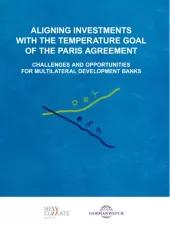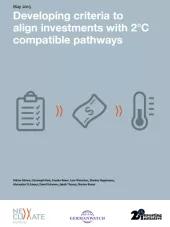This report studies the development of criteria for assessing the compatibility of financial investments with the international goal to limit global temperature increase to below 2°C above pre-industrial levels. The findings are intended as a starting point and a key input for a longer term process to develop consensus-based 2°C investing criteria. The focus here is placed on investments in projects and physical assets, in particular of development and climate finance organisations.
In order to limit global temperature increase to 2°C, global greenhouse gas (GHG) emissions will have to be reduced significantly, eventually to zero, during the course of this century. This requires shifting capital from high to low carbon investments as well as significant capital mobilisation for investments in 2°C- compatible infrastructure. Given the long lifetime of physical assets, and the urgency of decarbonisation over the coming decades, this needs to begin today.
Public financial institutions can play a prominent role in contributing to aligning investment flows with the 2°C limit, as well as in closing the current infrastructure investment gap, responding to their explicit or implicit climate mandates and leadership role in the finance sector.
The majority of international financial institutions integrate climate considerations into their finance decisions to some degree, and are familiar with different types of criteria, including positive and negative lists, qualitative and quantitative benchmarks, and the use of shadow carbon pricing. However, current approaches do not link to the 2°C limit. 2°C investment criteria are therefore needed to guide investors in this regard. Such criteria may also support other purposes, including an understanding of climate risks and improved reporting and accountability.








